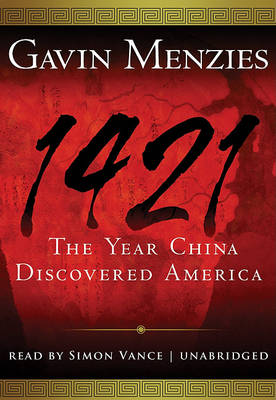
On 8 February 1421 the largest fleet the world had ever seen sailed from its base in China. The ships, 500 foot long junks made from the finest teak and mahogany, were led by Emperor Zhu Di's loyal eunuch admirals. Their mission was "to proceed all the way to the end of the earth to collect tribute from the barbarians beyond the seas" and unite the whole world in Confucian harmony. Their journey would last over two years and circle the entire globe. When they returned Zhu Di had fallen from power and China was beginning its long, self-imposed isolation from the world it had so recently embraced. The great ships rotted at their moorings and the records of their journeys were destroyed. Lost was the knowledge that Chinese ships had reached America 70 years before Columbus and circumnavigated the globe a century before Magellan. They has also discovered Antarctica, reached Australia 350 years before Cook and solved the problem of longitude 300 years before the Europeans. Gavin Menzies has spent 15 years tracing the astonishing voyages of the Chinese fleet. In this historical detective story, he shares the account of his discoveries and the incontrovertible evidence to support them.
His narrative brings together ancient maps, precise navigational knowledge, astronomy and the surviving accounts by Chinese explorers and the later European navigators. It brings to light the artefacts and inscribed standing stones left behind by the Emperor's fleet, the evidence of sunken junks along its route and the ornate votive offerings left by the Chinese sailors wherever they landed, in thanks to Shao Lin, goddess of the sea.
Note: Some extra information is on the website http://1421.tv/
It's an interesting thesis. The idea that in the 15th Century, just before the emperor decided that a thunderstorm and tragic fire were a sign that he was doing something wrong and that exploration was out, that Chinese explorers had made it to America and to Australia and mapped it all out. It does pose some questions about some of the accepted theories, but, and it's a bit but, a lot of it is conjecture and based on secondary sources. Unfortunately some of the primary sources were destroyed when the Emperor decided that isolationism was a good thing, so we may never know the truth of the thesis.
It's an area that needs more research, still, it was possible that others also found America, the Brendan Voyage and other experiments prove that America may have been found several times but not exploited fully.
It's not a bad read, and it's interesting to have a view from a person who is familiar with the seas about the topic, a person who experienced the tides and the changes and some of the ways things are not always as they seem on water. Still needs more research and backing for it. I did find the refer to website and paperback references a bit jarring and his leaps of faith were almost on par with those in the Holy Blood and the Holy Grail. I did find it readable and it reminded me not to always take history at face value which is an important reminder in my mind.
Reading updates
-
Started reading
-
1 September, 2010:
Finished reading
-
1 September, 2010:
Reviewed
